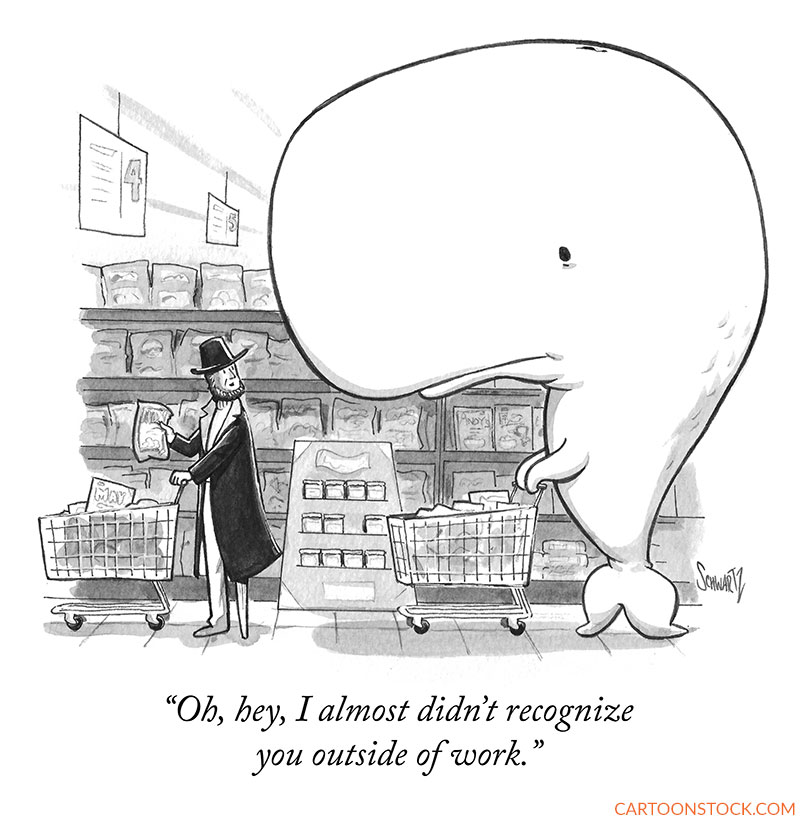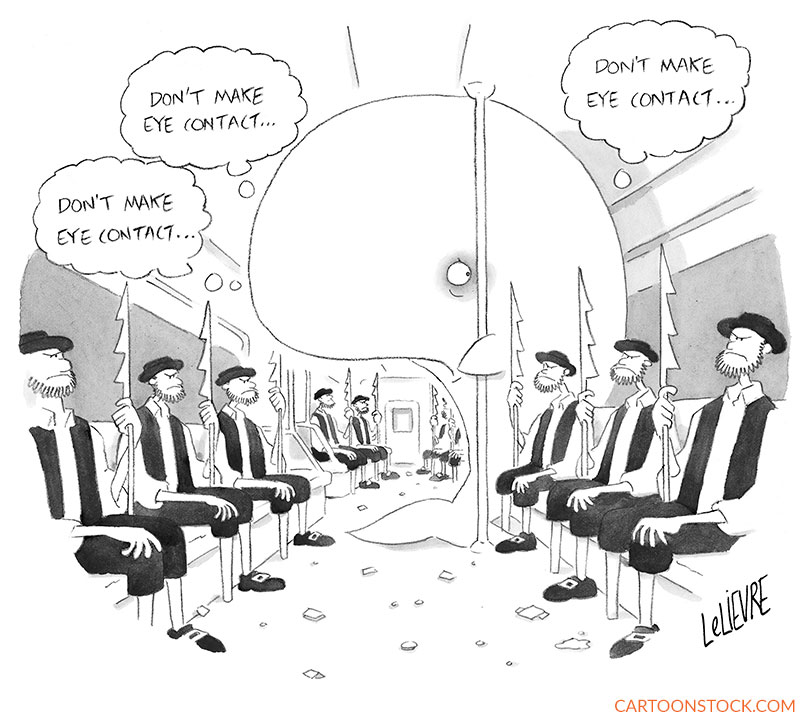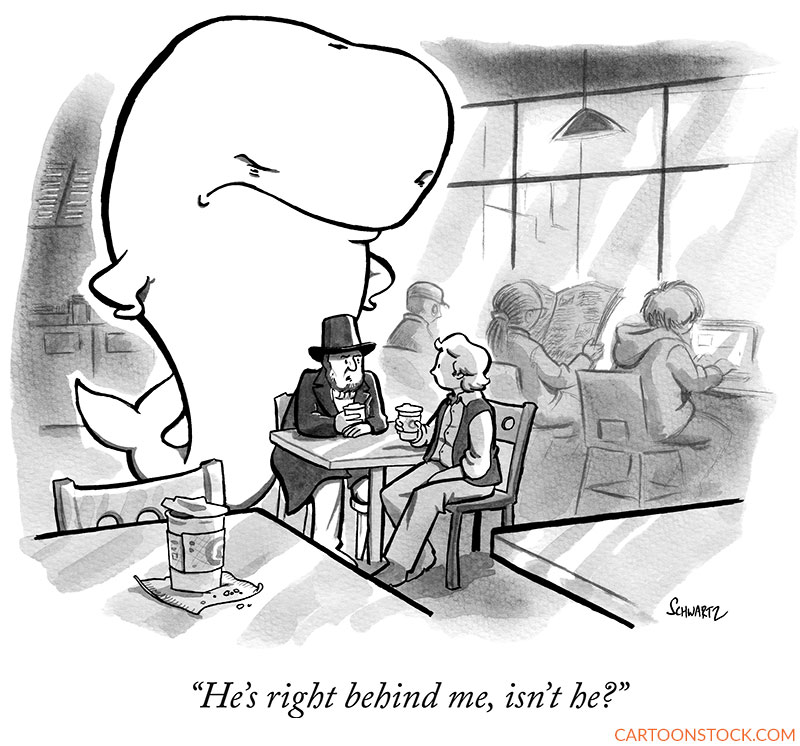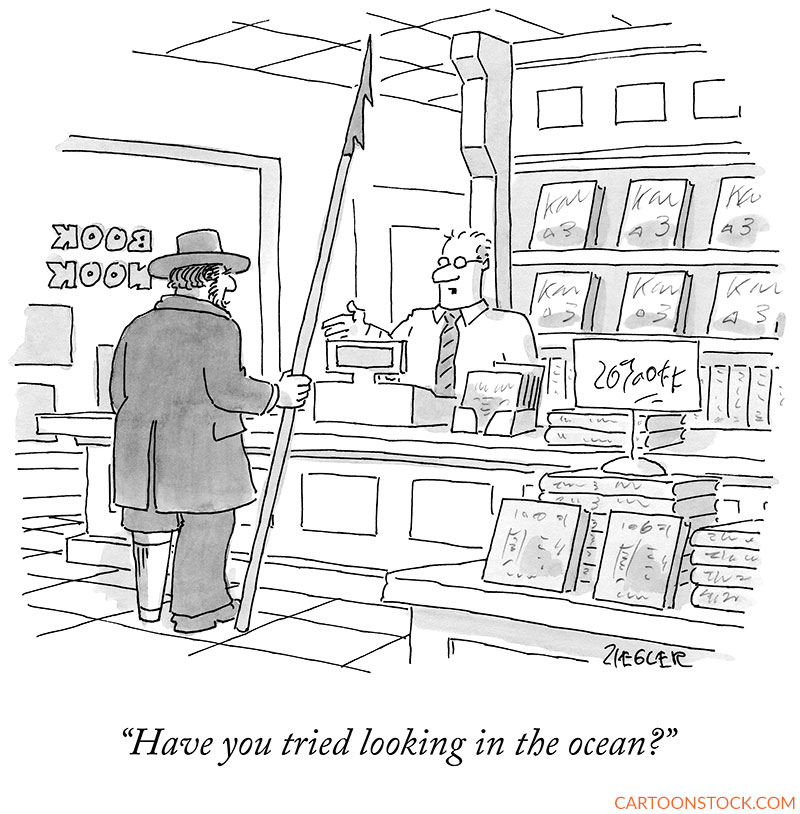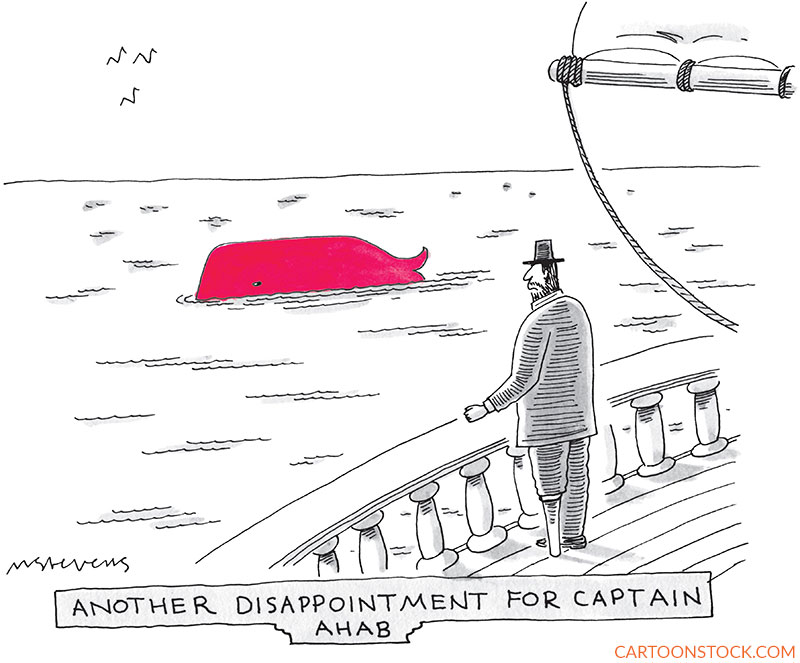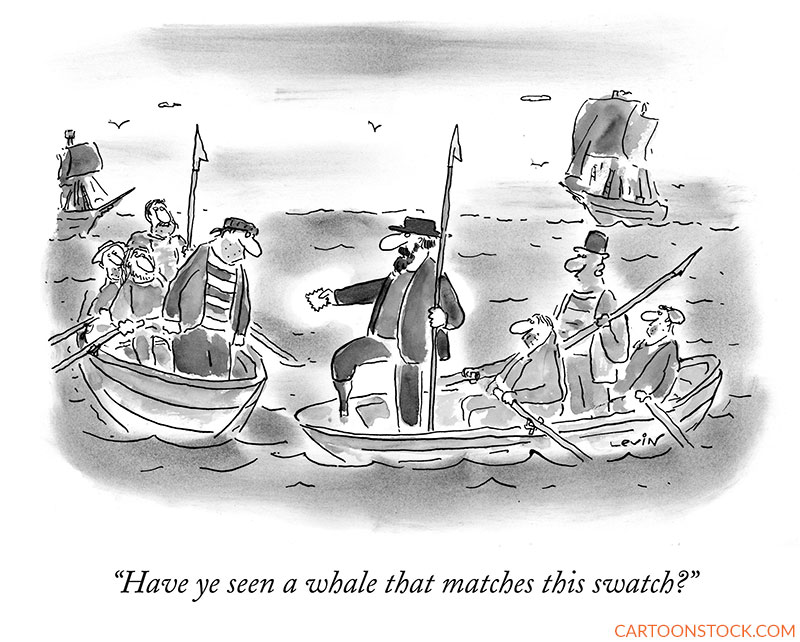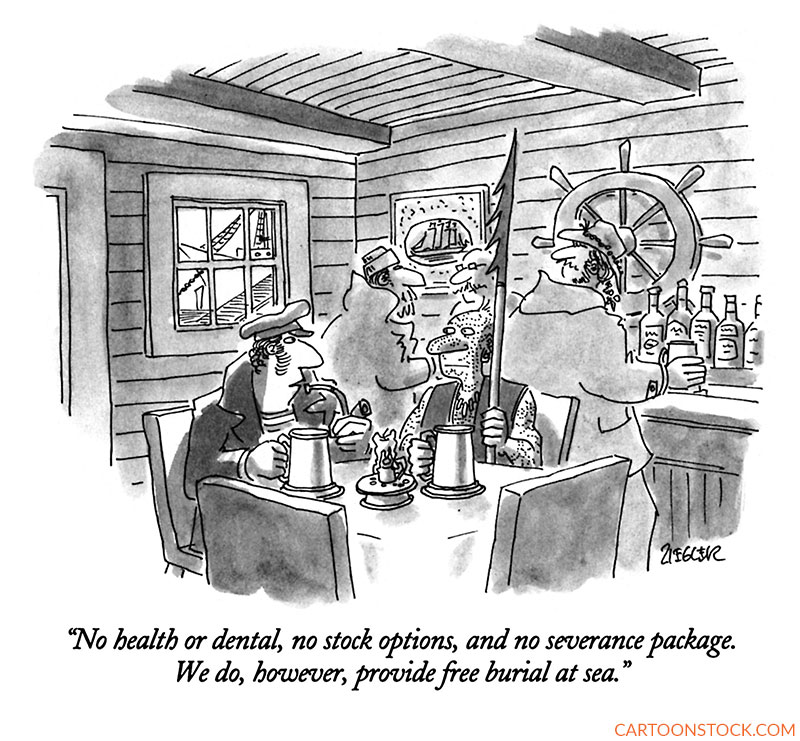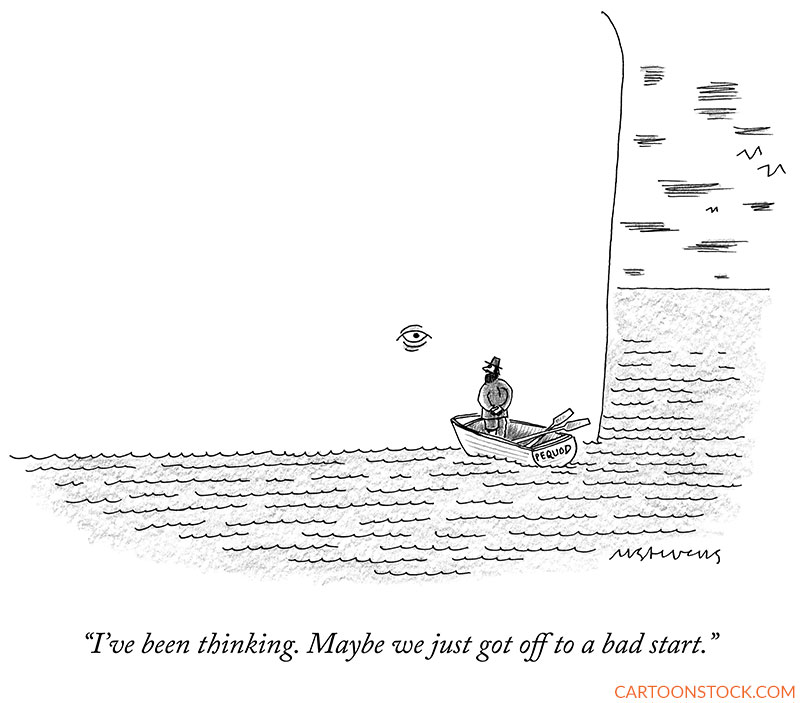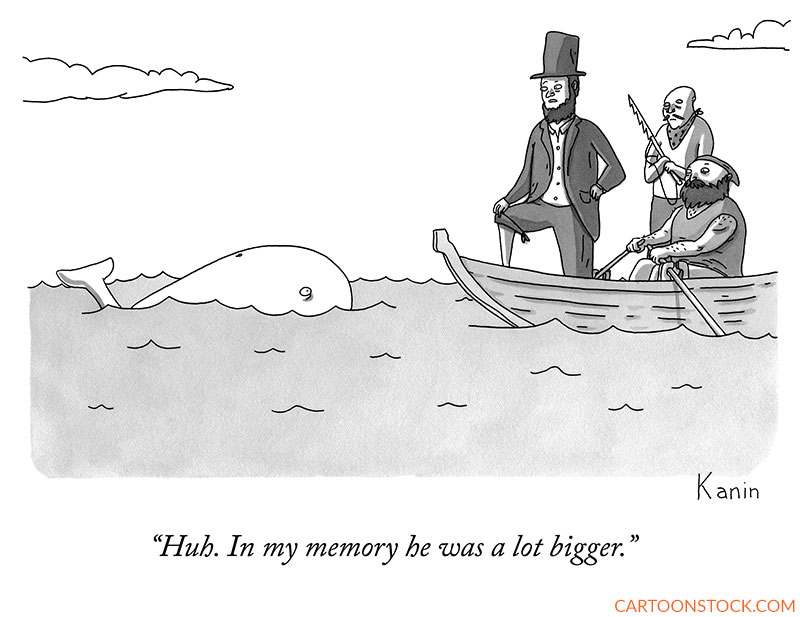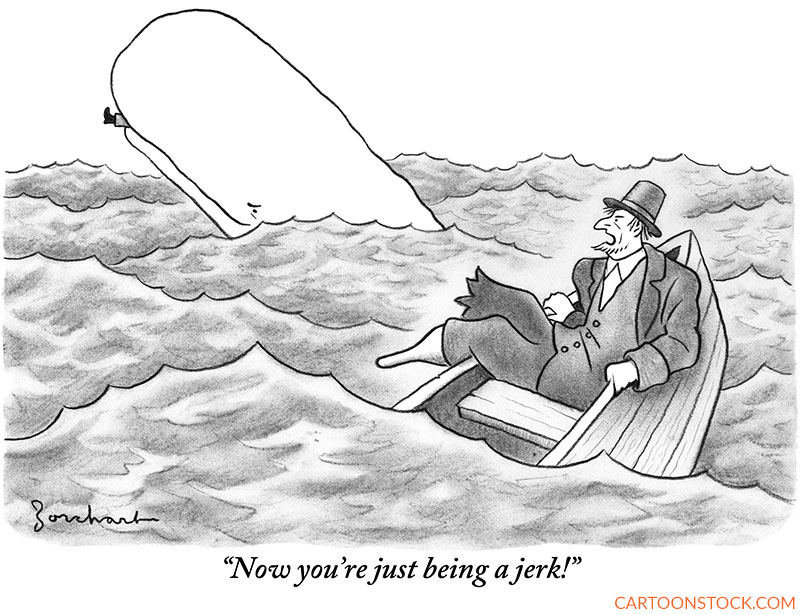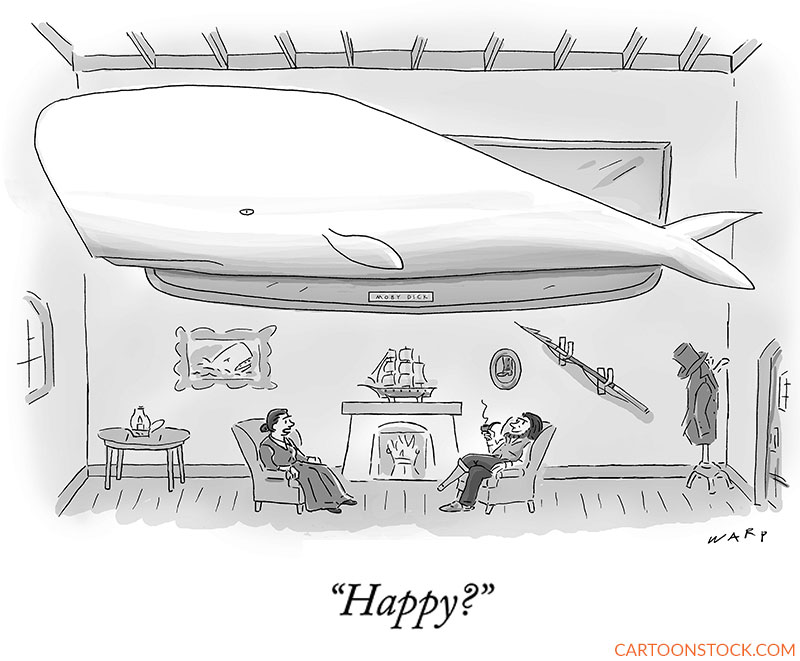
Cartoon critics Phil Witte and Rex Hesner look behind the gags to debate what makes a cartoon tick. This week our intrepid critics take a look at Moby Dick cartoons.
For the most memorable fictional character in Western literature, there are many worthy candidates: Hamlet, Heathcliff, Huckleberry Finn, to pluck a few names from a typical college reading list. We nominate a title character who is not human: Moby-Dick.
Far more people are aware of Melville’s novel than who have actually plowed through it, but most everyone knows that Moby is (1) a whale, (2) white, and (3) the obsession of Captain Ahab. That’s more than enough for cartoonists to sharpen their quill pens and have a go at ol’ blubber boy.
A common way to generate gags is to take familiar characters and place them in unfamiliar settings. Ben Schwartz relies on that approach by locating his characters in a modern setting doing a mundane chore. But more is going on here than just characters meeting in an unlikely place. The humor lies in the fact that Moby-Dick is a singularly recognizable character. And the casual “Oh, hey” in the caption—nice touch.
Glen Le Livre, apparently channeling New Yorkers’ wariness of unsavory characters in subway cars, places the legendary leviathan on the A train—”A” as in Ahab. This is Moby’s nightmare: not one Ahab, but multiple, identical Ahabs, as if reflected in opposite facing mirrors. It’s rare to see a caption—here, in a thought bubble—repeated three times, but doing so effectively captures the whale’s mounting anxiety.
Why are there so many Moby-Dick cartoons? Aside from the fact that it’s fun to draw a white whale, cartoonists find endless comic possibilities in the fundamental conflict between Moby and his antagonist. In the previous cartoon, the whale was terrified. In this cartoon, another one by Ben Schwartz, it’s Ahab who has reason to be concerned. Again, the setting is the present, while Ahab is wearing his trademark hat and his coffee pal—could that be first mate Starbuck?— seems to be wearing period attire.
Other cartoonists focus on Ahab’s search for the elusive cetacean. Jack Ziegler again chooses a modern-day setting for a cartoon in which the worlds of fiction and reality collide. The harpoon not only reminds us of Ahab’s savage quest; it serves to divide the image into the two worlds these characters inhabit.
Other cartoons hew slightly closer to the text—sort of. Mick Stevens may have been inspired by the long passages describing Ahab scanning the waters for the white whale. A whale by any other color is given a pass.
That the whale is a rare albino specimen likely makes Moby-Dick such an unforgettable character. But as anyone who has selected house paint knows, there are a maddeningly huge number of shades of white, and that’s the basis for Arnie Levin’s cartoon. Again, the gag hinges on anachronism, but the inclusion of archaic and modern words in the caption propels this cartoon to the next level.
Sometimes the references to the novel are less obvious. In another Jack Ziegler cartoon, neither Ahab nor Moby-Dick are in the picture. Instead, we see a crew member—possibly “Ishmael”—explaining to the harpoonist—presumably Queequeg—about a career in whaling. Q still has a chance to change his mind; judging from the view out the window, the voyage has not begun.
Other cartoons focus on the dramatic moment when Ahab finally confronts his nemesis. In another cartoon by Mick Stevens, Ahab shows his seldom seen sensitive side. The caption, broken into two sentences, suggests a thoughtful approach to a previously fraught relationship. The depiction of Moby-Dick, more a white wall than a white whale, is striking. Ahab, a tiny figure in a simple rowboat (note the name of Ahab’s ship, the Pequod, in tiny letters), is no match for the giant mammal.
Zach Kanin flips on its head the whole concept of Moby-Dick as an unstoppable force of nature against which humans are powerless in this cartoon. It’s a wildly original take on the subject, and the understated caption is perfect.
David Borchart has a different vision of how the confrontation may have gone. Moby has the upper hand, not to mention the lower right leg.
At least from Ahab’s viewpoint, a more satisfying outcome is presented in Kim Warp’s cartoon. Ahab looks at ease, sitting by the fire, smoking a pipe, with mementos of his whaling days on the wall. His reply can be surmised from the satisfied smile on his face. In this version the story, Ahab lived happily ever after …. The End.


